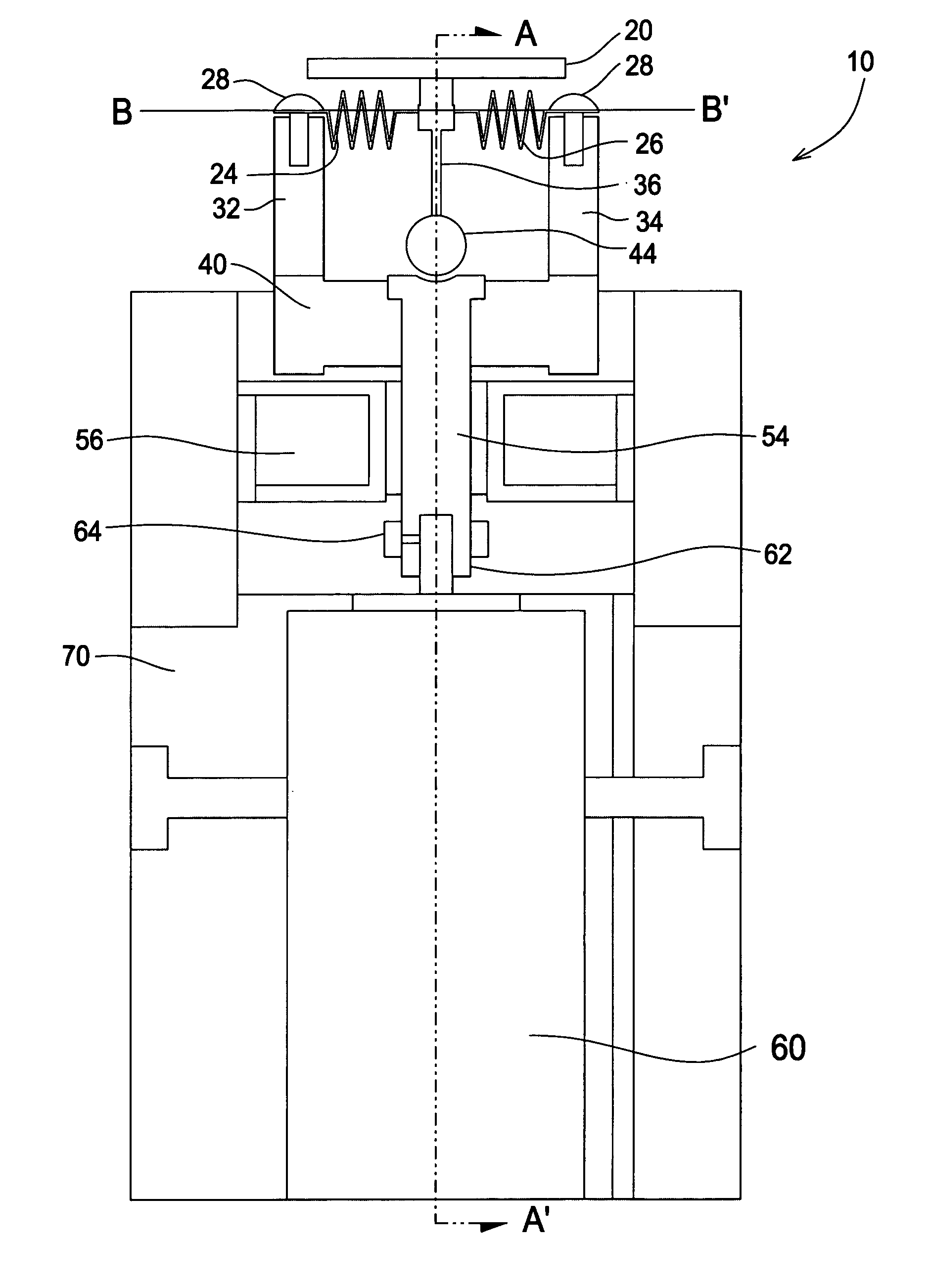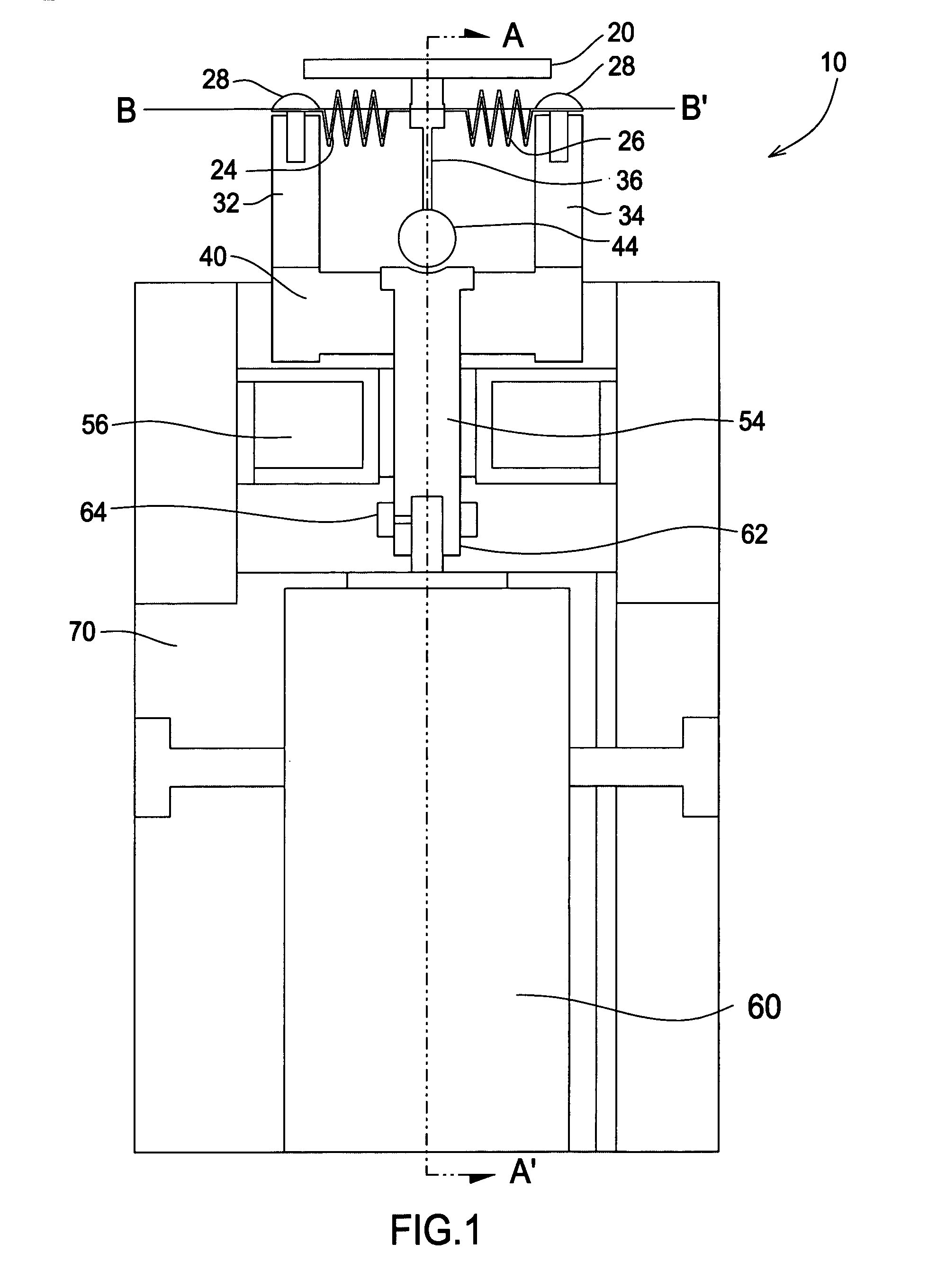Light beam deflector
a technology of light beam and deflector, which is applied in the direction of optics, instruments, optics, etc., can solve the problems of limited value, limited operating range, and complicated control signals of two axes tilting mirror deflectors, and achieve the effect of simplifying the deflection of light beams
- Summary
- Abstract
- Description
- Claims
- Application Information
AI Technical Summary
Benefits of technology
Problems solved by technology
Method used
Image
Examples
Embodiment Construction
[0022]The present invention is directed to a light beam deflector utilized to controllably deflect a concentrated light beam (e.g., laser and / or multi-wavelength concentrated light beams). The deflector is applicable for a variety of light beam deflection applications including, without limitation, compact beam scanning applications (e.g., for reading bar codes), controlled movement of medical laser devices, light projection applications such as light shows, as well as for use in creating optical connections. In this regard, the deflector utilizes a mirror that may be controllably tilted about an axis of oscillation that may be oriented in any angular position (0 to 2π) about an axis of rotation perpendicular to the axis of oscillation. Accordingly, this allows the mirror to tilt in any one of an infinite number of planes passing through the point of intersection of the axes. Furthermore, the mirror may be oscillated between first and second tilt angles in any plane coinciding with ...
PUM
 Login to View More
Login to View More Abstract
Description
Claims
Application Information
 Login to View More
Login to View More - R&D
- Intellectual Property
- Life Sciences
- Materials
- Tech Scout
- Unparalleled Data Quality
- Higher Quality Content
- 60% Fewer Hallucinations
Browse by: Latest US Patents, China's latest patents, Technical Efficacy Thesaurus, Application Domain, Technology Topic, Popular Technical Reports.
© 2025 PatSnap. All rights reserved.Legal|Privacy policy|Modern Slavery Act Transparency Statement|Sitemap|About US| Contact US: help@patsnap.com



